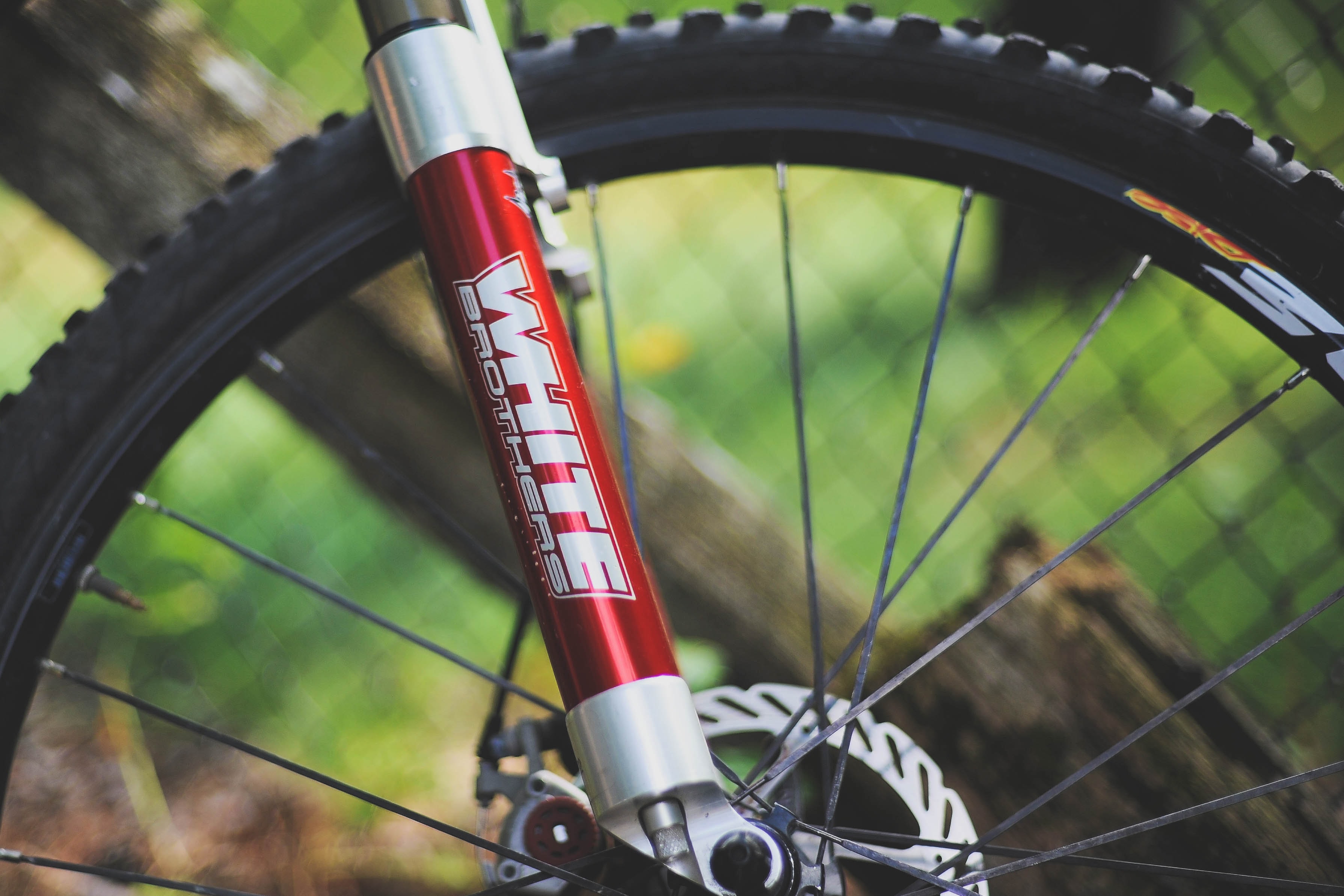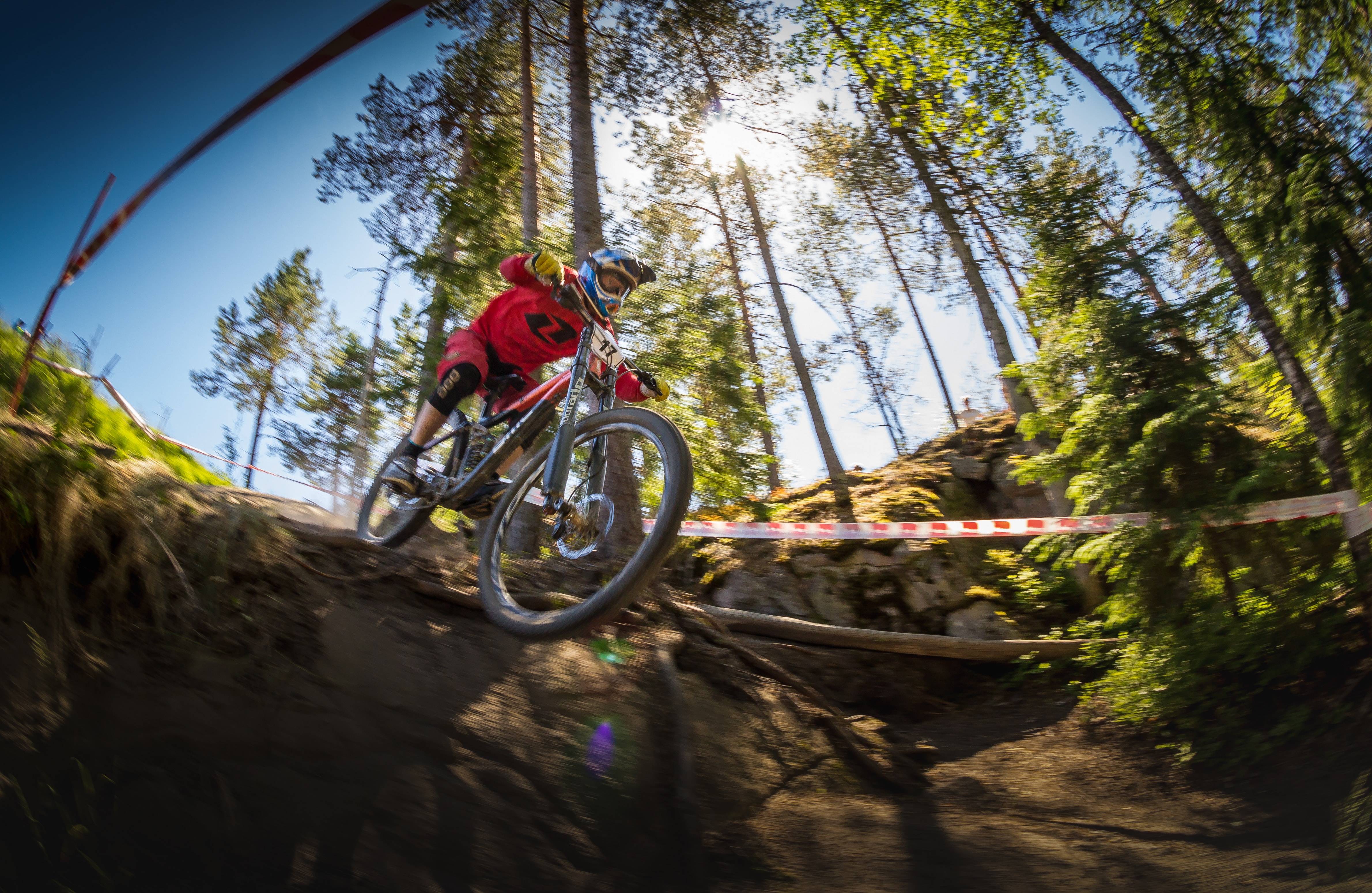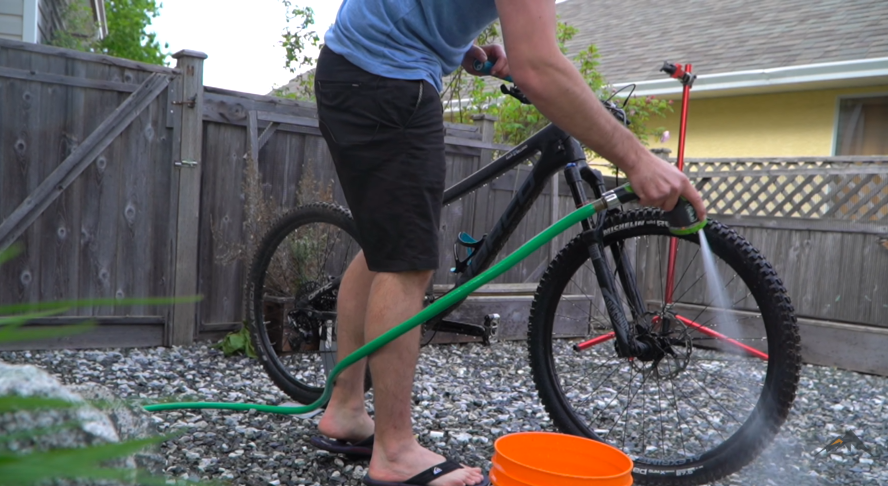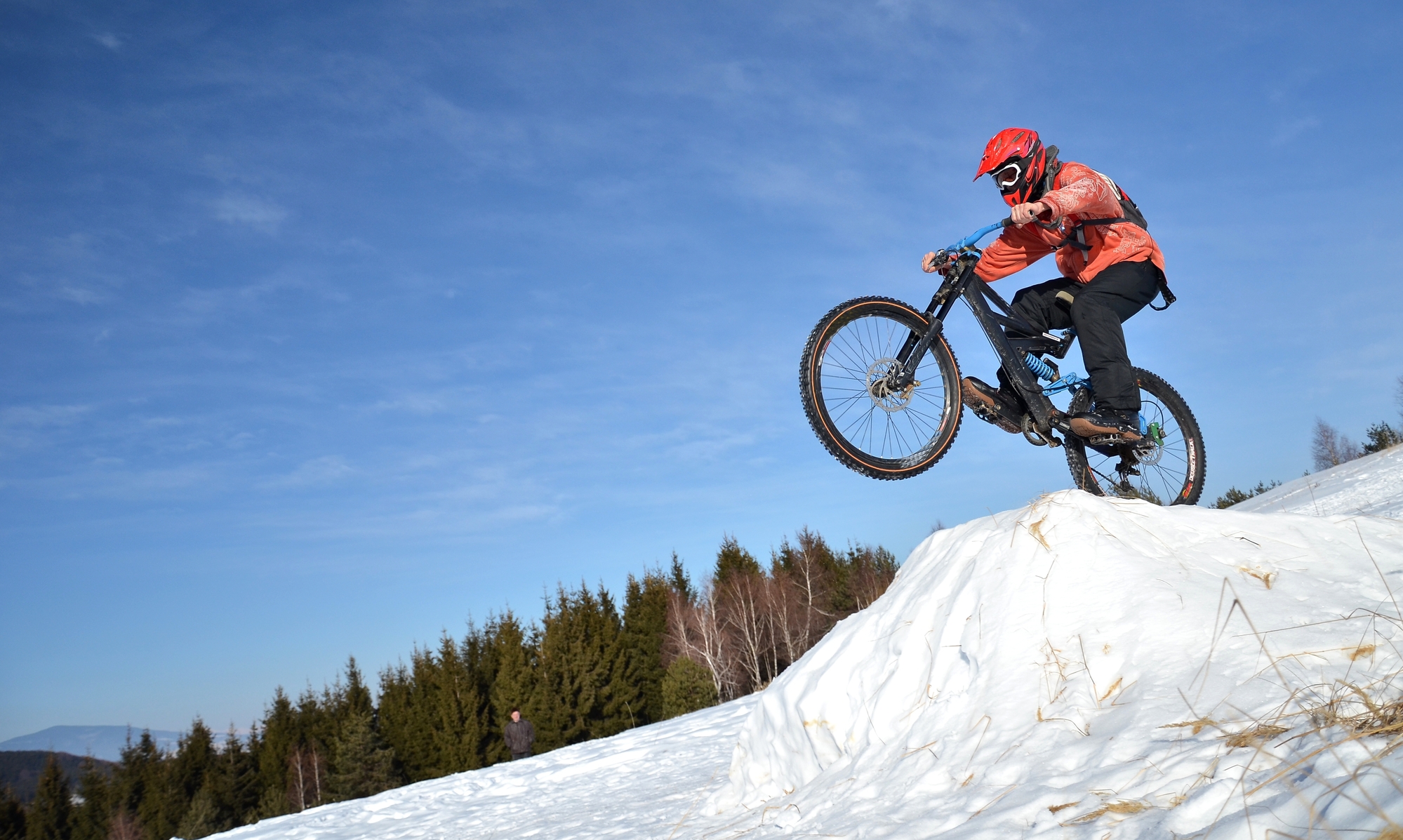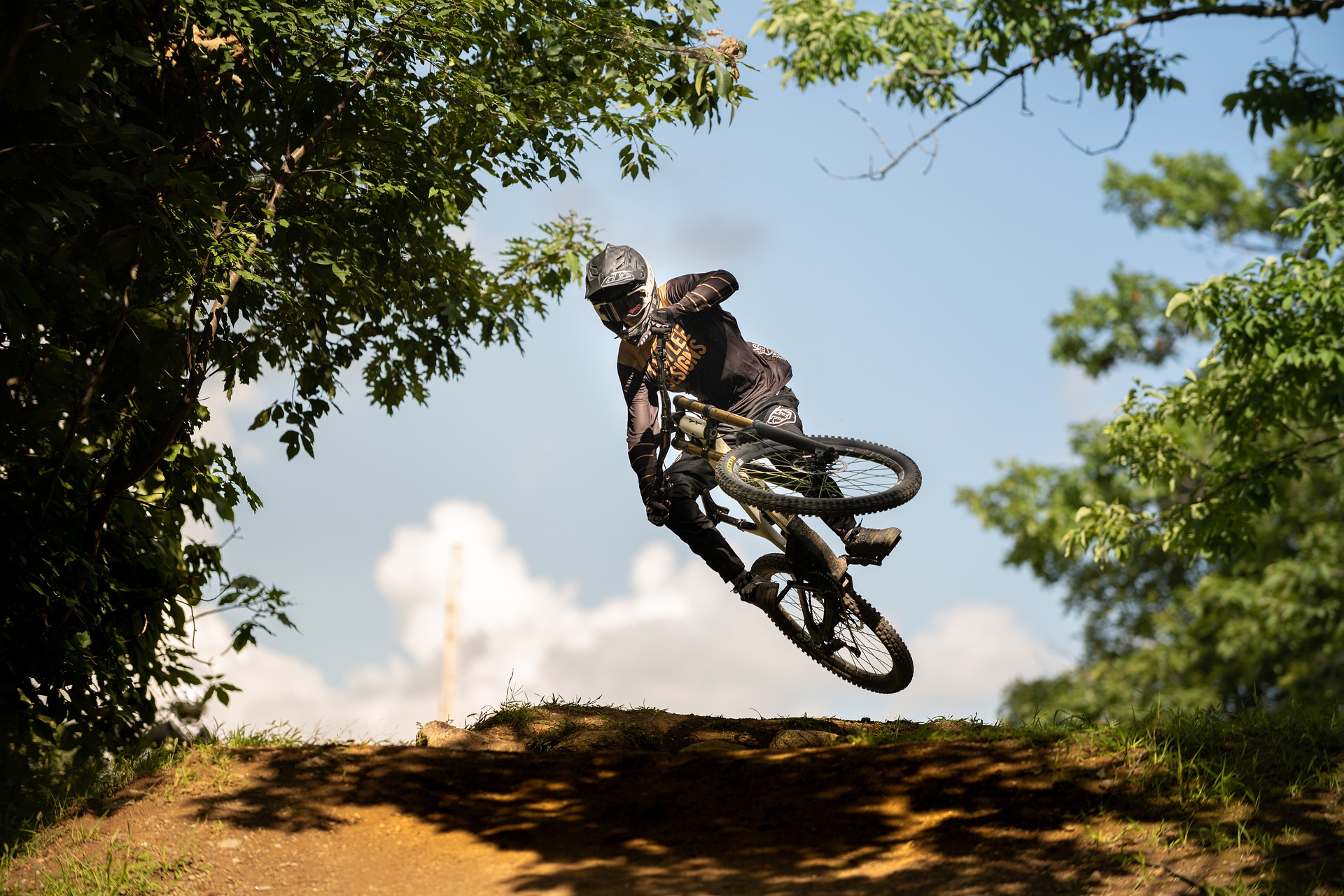Buying your first mountain bike? Congratulations!
Mountain biking is a popular sport because it offers so much variety. There are different trails for all riders, and you can choose to ride on dirt, rocks, or pavement.
Another thing that makes mountain biking so great is the different types of suspensions available. Choosing the right suspension for your riding style is essential because it can make or break your ride.
Let's look at the different types of mountain bike suspensions and how to choose the right one for you.
What's a Bike Suspension?
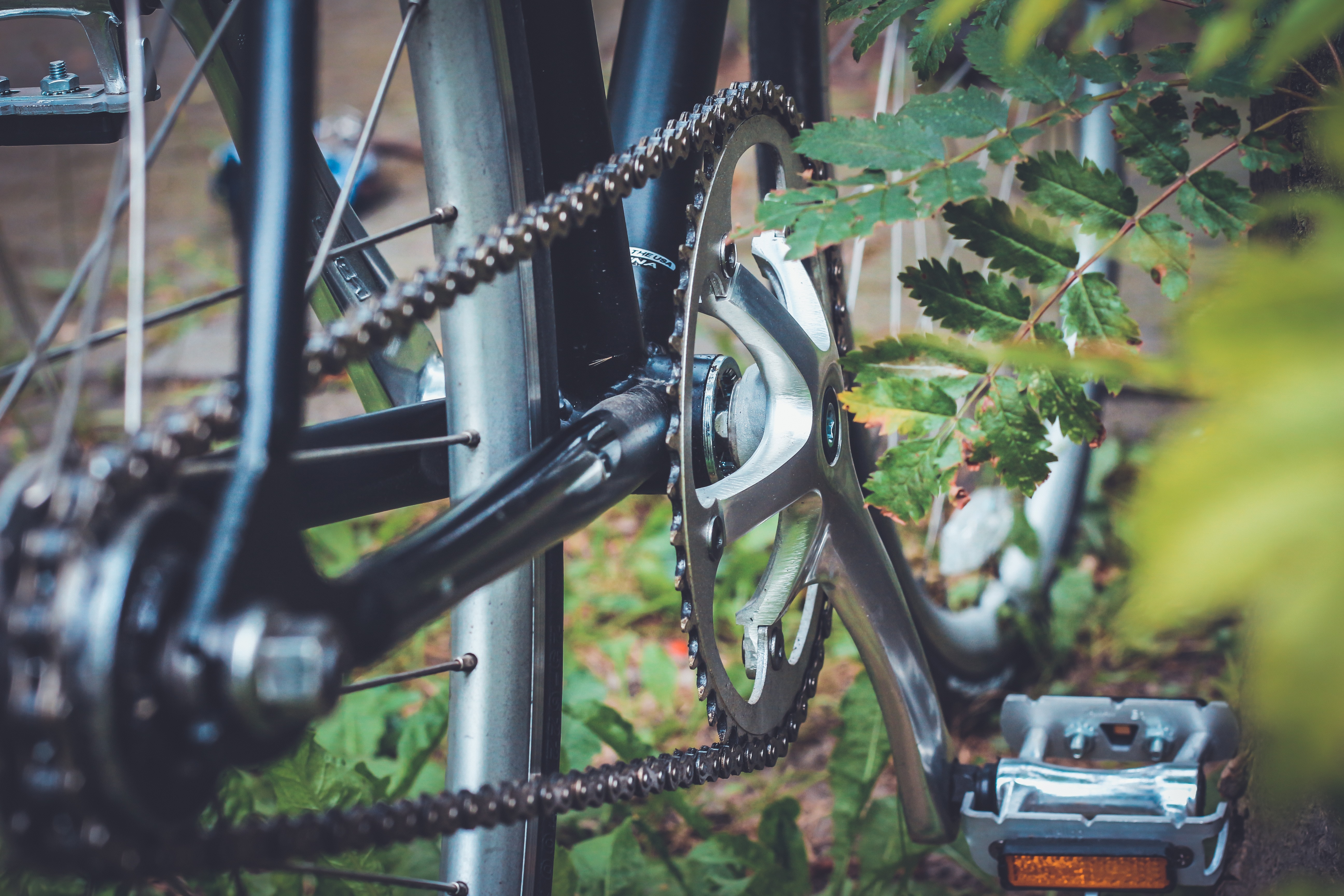
A mountain bike suspension is a system that consists of springs and dampers that absorbs the impact of bumps on the trail.
The purpose of a suspension is to make your ride more comfortable and help you maintain control of your bike on rough terrain.
Bike suspension improves traction and comfort on rough, rocky singletrack or potholed trails.
Depending on the terrain you ride on and your riding style, you may want a different suspension type.
What Are The Two Types of Bike Suspension?
There are generally two types of mountain bike suspension: hardtail and full-suspension.
A hardtail suspension only has shocks in the front, while a full-suspension has shocks in the front and rear.
Full-suspension bikes are generally more expensive than hardtails, but they offer a smoother ride.
Take a look at the table[1] below for some points on comparison:
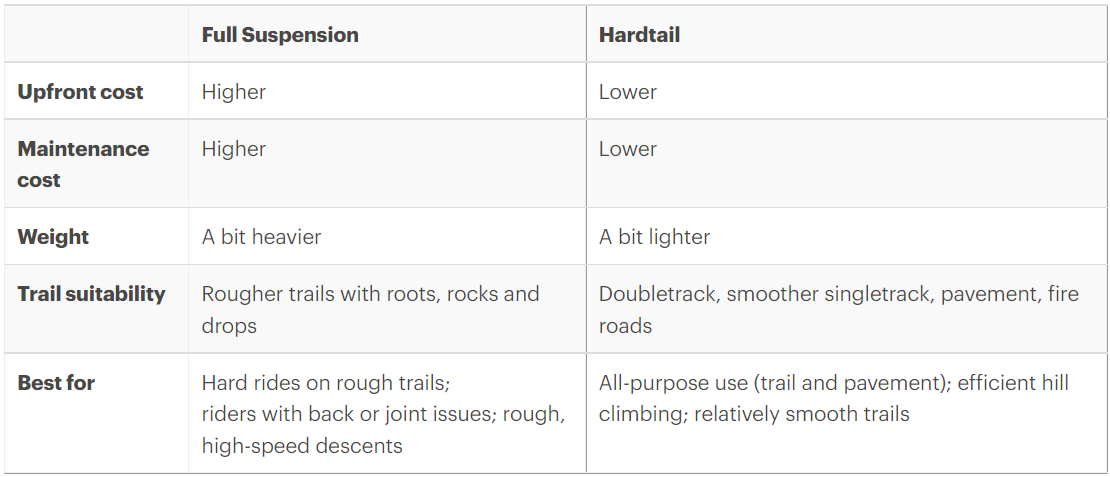
What is a Forks or Hardtail Mountain Bike?
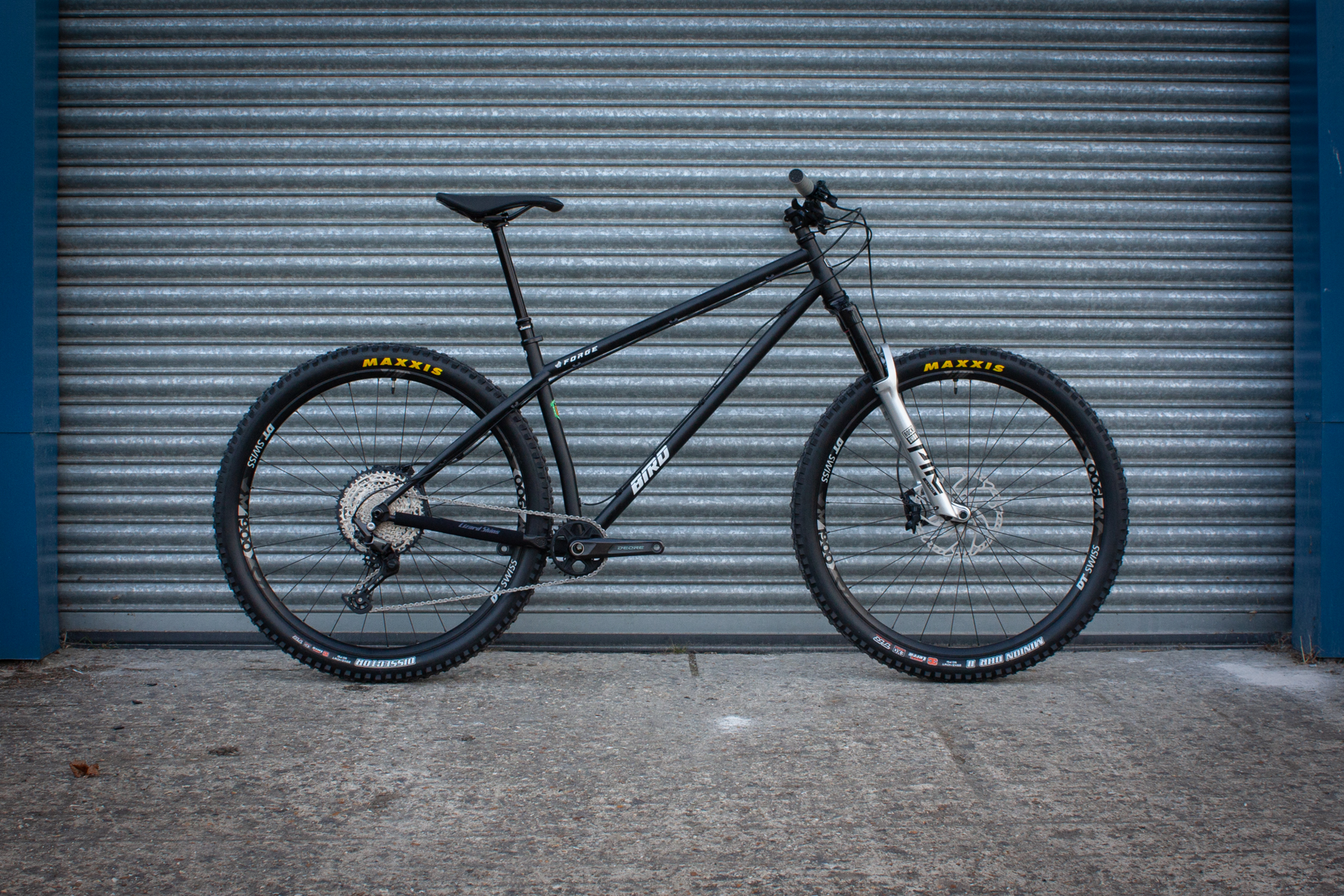
Bird Forge Shimano 12 Speed 29" Hardtail Bike
Forks or hardtails are the traditional mountain bike. Hardtails have suspension forks in the front to absorb bumps, but the bike's rear has no suspension.
The name "hardtail" comes from this. The suspension fork absorbs the impacts and tremors of the trail.
It also improves handling and steering while riding over rugged terrain. The suspension fork is equipped with metal coils or compressed air to give resistance.
For enduro riding, cross-country riding, and backpacking, hardtail mountain bikes are typical.
They're also good on all terrains: gravel roads, fire roads, easy singletrack, and dirt.
What Are The Pros And Cons of Hardtail Mountain Bikes?
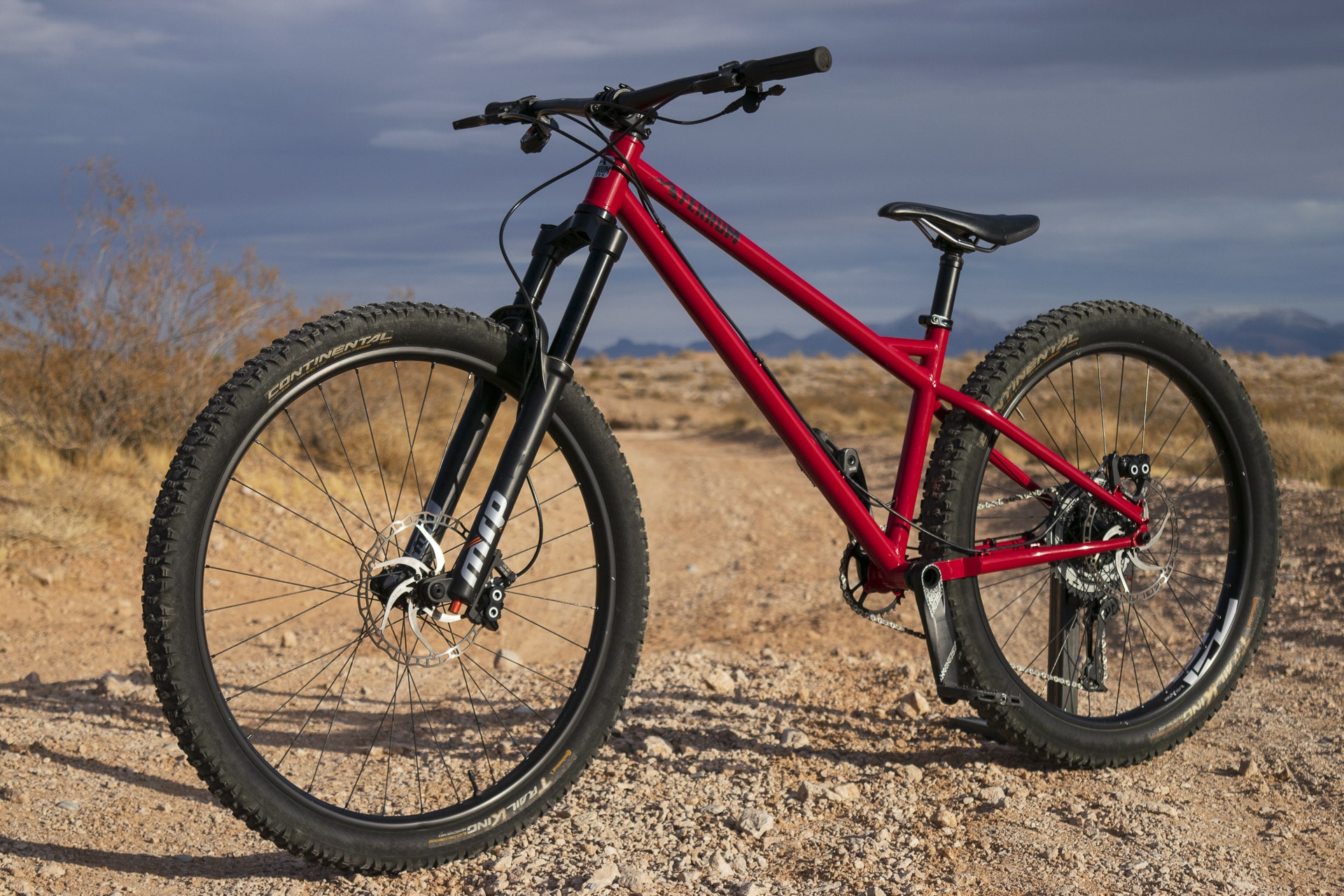
NV-HT Chromoly 29er/27.5+ Enduro Hardtail
As with every mountain bike, owning a hardtail bike has its pros and cons.
Pros
More gearing options - A hardtail frame may be equipped with a front derailleur and utilize a 2x or 3x drivetrain. This is ideal for riders who want greater range options.
For example, if you want a drivetrain with a massive 500 percent gear range, you could get one. This would be excellent for riding up hills or bikepacking.
Easier to repair - If you own a steel hardtail, all you have to do is weld the frame back together and keep riding. Any welder can fix your frame.
Suspension issues frequently arise when the trail is excessively rocky, sandy, or rooty.
It's difficult to predict what will happen if you have a full-suspension frame and need to make repairs because the suspension system functions may be affected.
More durable - A hardtail mountain bike's rigid frame is more resistant to harder impacts without sustaining damage. There are no delicate connections or pivot points.
Tubes are welded together to form a single structure. There is no danger of bottoming out and damaging the bike.
More versatile - All sorts of mountain biking, downhill, cross-country, enduro, and trail riding, are suitable for hardtail mountain bikes.
Their efficiency also allows you to leverage them for other variations of cycling.
Beginner-friendly - Everyone can benefit from learning to ride a hardtail bike. The reason is that utilizing proper mountain biking techniques on a hardtail mountain bike forces you to learn how to ride correctly.
These are all critical skills for mountain biking that you won't learn if you start on a full-suspension bike.
Cons
Fewer adjustment options - You can only change the suspension forks on a hardtail mountain bike.
Because the frame is entirely rigid, you won't be able to make any adjustments. The bike's ride quality will not change significantly.
Less efficient on rough terrain - Rather than rolling over, the rear tire on a hardtail hops up off of rocks and trees when traveling across a rough trail.
When you press down on the brakes, your bike's forward momentum decreases by pushing it upwards. It takes energy to pedal up to speed again.
Less technologically advanced - A hardtail mountain bike is more straightforward than a full-suspension bike. Some mountain bikers regard them as lower-end or for beginners.
Less stable - Hardtail mountain bikes bounce around a lot when riding across rough terrain and downhill, making it more difficult to control the bike.
Less comfortable - Hardtail mountain bikes allow for more shocks and tremors to pass through the bike into your body.
Every jolt on the bike will feel more intense when you're riding over rough terrain or landing after a fall or jump. There is nothing that can absorb the force for you.
What is a Full-Suspension Mountain Bike?
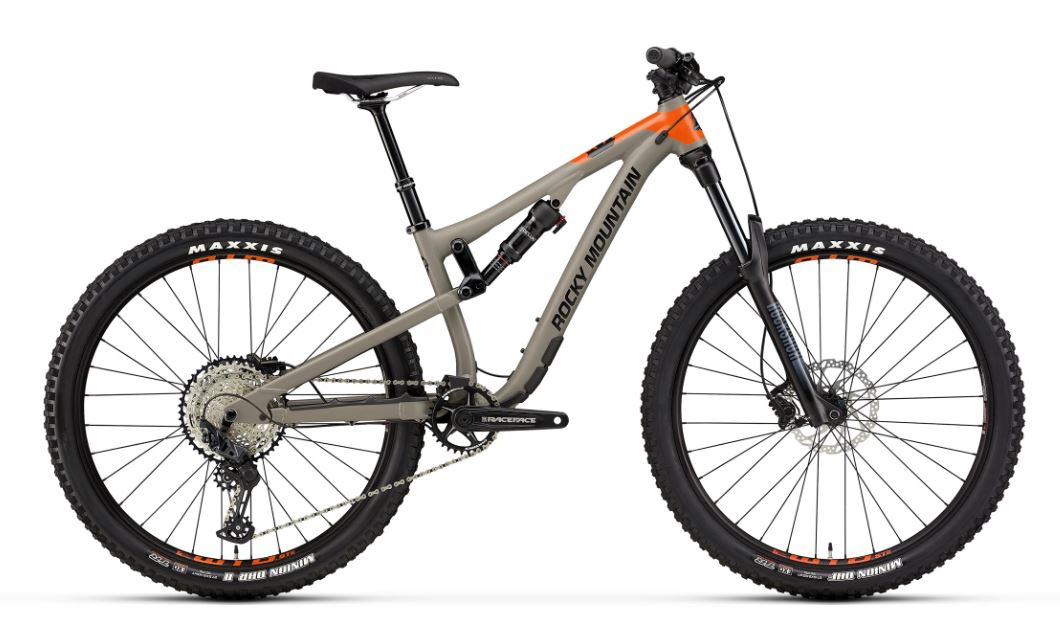
Rocky Mountain Reaper 27.5
A full-suspension mountain bike features both a suspension fork and a rear shock. The suspension system helps to dampen vibrations and absorb shocks.
The ride is more pleasant and more efficient on rough terrain with this. The suspension also aids in handling, control, and traction.
The rear shock is built into the bike's frame. For resistance, it can use either compressed air or a metal coil.
A bike's frame comprises two distinct parts: a mainframe and a swingarm. Both frame parts are connected by the shock.
The swingarm pivots against the mainframe as the shock compresses and rebounds, allowing the rear axle to move.
What Are The Pros And Cons of Full-Suspension Mountain Bikes?
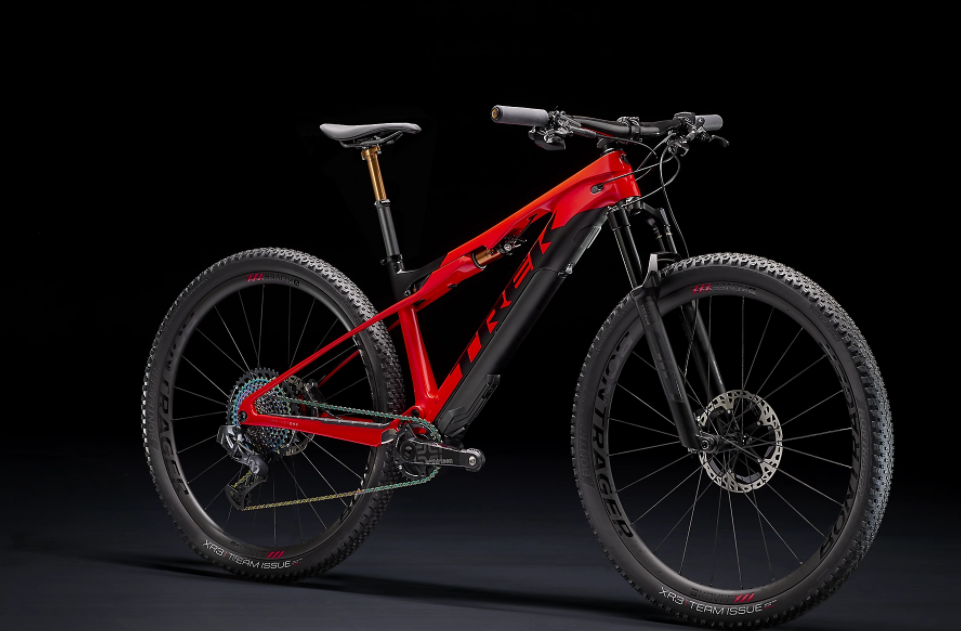
E-Caliber 9.9 XX1 AXS
Full-suspension mountain bikes also come with their own set of pros and cons.
Pros
Looks cooler - Full-suspension bikes look fantastic, especially if you add a coil shock. The thick, metal spring appears hardy & rugged. You may also choose the spring's tone with your frame.
More technologically sophisticated - Engineers spend a lot of time and effort developing high-tech full-suspension frames and shock absorbers.
Modern bikes are now equipped with sophisticated suspension systems. And manufacturers constantly improve the bike's efficiency and performance through engineering.
More adjustable - Rear shocks offer multiple adjustments so you can dial in the exact rebound damping, compression damping, suspension sag, progression range, and spring rate for the type of riding you do.
The same bike may be used for trail, road, and all-mountain riding. Efficiency also varies. A full-suspension bike will offer you the ride feel you're looking for.
Better handling & traction - You can corner harder on difficult or rougher trails with a full-suspension mountain bike because you don't have to worry about your tire sliding out from underneath you.
Bumpy trails allow you to have greater control of the bike. After all, your tires must be on the ground for you to have an adequate grip to turn and corner.
More stable - The suspension prevents the bike from moving around too much while you ride over challenging terrain and descend steep hills.
The seat, pedals, and handlebars aren't moving around as much. You may steer and pedal while the shock and fork absorb bumps and vibrations. This allows you to tackle rougher trails at higher speeds.
Cons
Harder to repair - If your full-suspension frame cracks, you may or may not be able to get it welded. You may have to opt for a professional fix.
Depending on the frame material and where the crack formed, a repair may affect your suspension function.
Less durable - Because there are more moving parts, more parts can fail. It can also damage a shock by bottoming out too hard or frequently if it's not set up correctly.
Generally, full-suspension bikes can't handle as hard of impacts as hardtails.
A lot heavier - The rear shock absorber, bearings, bushings, and more complex frame design all add weight to the bike.
A heavier bike takes more force to climb and accelerate with. It's also a bit harder to handle and turn.
More maintenance - Full-suspension mountain bikes have more components. These parts all need to be maintained regularly.
The frequency of maintenance on your shock is determined by the type of shock, the manufacturer, and how much you ride.
Much more expensive - Suspension parts are pricey. Mountain bikes at the mid-range level start at around $2000 and go up to about $2500.
Rear suspension also adds approximately $800 to $1200 to the cost of a mountain bike on average.
You might spend several thousand dollars maintaining your bike's rear suspension system throughout its life.
Conclusion
There are two types of mountain bike suspensions - hardtails and full-suspension bikes. Hardtails are cheaper and more durable, but they don't offer much shock absorption.
Full-suspension bikes are more expensive and require more maintenance, but they offer better handling and traction. Ultimately, it comes down to what you're looking for in a bike and how much you're willing to spend on one.
Do some research and take a few test rides to figure out what's best for you.
Happy trails!

